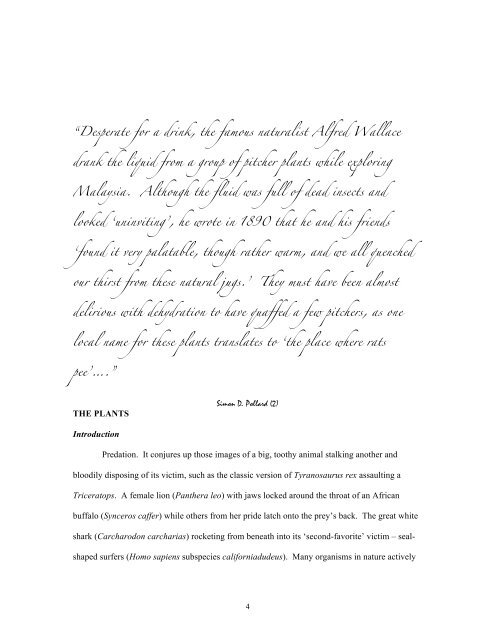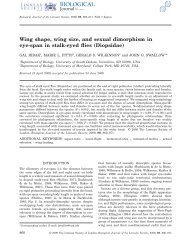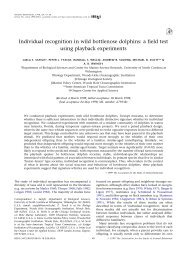Carnivorous Plants and Their Prey
Carnivorous Plants and Their Prey
Carnivorous Plants and Their Prey
Create successful ePaper yourself
Turn your PDF publications into a flip-book with our unique Google optimized e-Paper software.
“Desperate for a drink, the famous naturalist Alfred Wallace<br />
drank the liquid from a group of pitcher plants while exploring<br />
Malaysia. Although the fluid was full of dead insects <strong>and</strong><br />
looked ‘uninviting’, he wrote in 1890 that he <strong>and</strong> his friends<br />
‘found it very palatable, though rather warm, <strong>and</strong> we all quenched<br />
our thirst from these natural jugs.’ They must have been almost<br />
delirious with dehydration to have quaffed a few pitchers, as one<br />
local name for these plants translates to ‘the place where rats<br />
pee’….”<br />
THE PLANTS<br />
Introduction<br />
Simon D. Pollard (2)<br />
Predation. It conjures up those images of a big, toothy animal stalking another <strong>and</strong><br />
bloodily disposing of its victim, such as the classic version of Tyranosaurus rex assaulting a<br />
Triceratops. A female lion (Panthera leo) with jaws locked around the throat of an African<br />
buffalo (Synceros caffer) while others from her pride latch onto the prey’s back. The great white<br />
shark (Carcharodon carcharias) rocketing from beneath into its ‘second-favorite’ victim – seal-<br />
shaped surfers (Homo sapiens subspecies californiadudeus). Many organisms in nature actively<br />
4

















